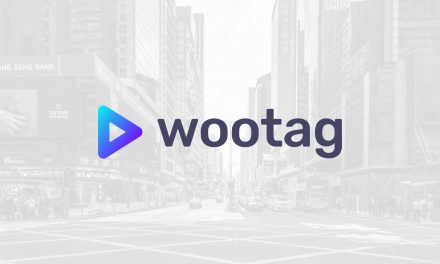Data can help create improved customer experience to attract consumers and open up new revenue models but many retailers and suppliers often face roadblocks to leveraging their data.
The retail and consumer processed goods (CPG) industry is facing unprecedented challenges due to the COVID-19 pandemic and the global economic downturn. Due to lockdowns across countries and the rise of remote work, traditional retail outlets and F&B establishments are facing difficulties with keeping businesses afloat, let alone growth. There is an urgent need for brick-and-mortar outlets to undergo shifts to make products and services available online.
As dining out was placed on hold, food vendors began to rely on takeaways and deliveries to survive. In Singapore and Malaysia, we have seen hawkers digitalise with food delivery mobile applications, social media and websites. Supermarkets and online grocery shops have also gained prominence. The e-commerce market has grown as a result of remote working and newfound online habits that have emerged as the COVID-19 pandemic progressed. The Southeast Asian e-commerce gross merchandise value (GMV) is estimated to exceed US$172B by 2025. Queries for online food delivery brands have grown more than 16 times in Malaysia, 20 times in Thailand and 13 times in Philippines over the last five years.
One of the most powerful tools retailers and suppliers can use to retain and grow their customer base—and their revenue—is data. Data can help create improved customer experience to attract consumers and reward loyalty, optimise supply chains to increase profits and decrease costs, and open up new revenue models. However, retailers and suppliers often face roadblocks to leveraging their data, including poor data quality, latency in the data pipeline process, and cumbersome data sharing. A data cloud provider can help companies overcome these obstacles by delivering performance, flexibility, speed, and security.
Customer Experience
As consumers become more demanding, retailers can use collected data to understand and deliver what the market wants. Marketing and product teams can analyse customer behaviour data from e-commerce and in-store point of sale (POS) streams to create personalised products and improve marketing campaigns. Retailers can leverage loyalty data and insights to transform engagement strategies, thereby creating better programs to retain and reward customers. Social and digital platforms can enable immediate consumer feedback en masse to achieve better demand sensing and forecasting.
Reaching fast, actionable insights requires the ability to process massive amounts of data quickly and easily. Time to insight is critical in providing a better customer experience. However, many companies still rely on slow legacy systems that exacerbate the issues created by data silos, deliver poor and inconsistent user experiences, and do not smoothly scale to accommodate a larger volume of data or a greater number of users.
Supply Chain Optimisation
Consumers expect products and services to be available on demand, even during times of disruption. At the same time, overstock means having unsold products, leading to revenue loss. Achieving the right balance requires superior supply chain management. Data can enable an optimised, resilient supply chain. Retailers and suppliers can mine data from transactions, data exchanges, social media, and IoT devices to achieve granular insights for inventory planning, demand forecasting, and management of disruptions.
Enabling these insights requires retailers and suppliers to exchange data such as transaction history, consumer behaviour, and inventory levels. To be of value, the data needs to be shareable, securely transmitted, and available in real time. Suppliers need to receive the information from retailers to move stock or increase order volumes as required. Suppliers can use the data to build analytics and create better relationships with retailers. However, disparate legacy systems hinder the easy and secure transfer of data, often requiring companies to rely on slow and unsecure processes such as file transfer protocol (FTP).
Data Monetisation
Large retailers and fast moving consumer goods (FMCG) companies have massive amounts of raw data that can be valuable both internally and externally. This includes anonymised customer data, transaction data, and POS data. Supplier analytics teams can use that information to gain an edge in demand forecasting and promotion planning. Other non-competitive companies such as data firms can use it to glean market insights. Even within the organisation, the data can be leveraged to increase profitability.
However, the process of monetising data can be complicated. There are privacy issues, which are always top of mind when sharing customer data. Sharing sensitive information can ruin a brand’s reputation and expose the company to lawsuits and regulatory fines. The biggest hindrance to this is poor data quality, which can affect the value of the information. Incoming data can be messy and rife with inconsistencies and missing values. Companies can spend precious time ingesting, cleaning, and organising the data. Legacy systems are often unable to help companies sort through these issues.
Enable a Data-Driven Organisation
The Data Cloud enable retail companies to generate more value from their data.
- Enabling retailers to deliver seamless omni-channel experiences
Retailers already have a substantial amount of information about the customer; they just need the technology to surface it. Data platform in the cloud breaks down silos and keeps data in one place, improving its integrity and quality while allowing companies to gain granular insights into consumer preferences, improve their business operations, and provide customers with personalised experiences. By quickly processing information from disparate sources and offering scalable performance, it accelerates time to insight, which is crucial to relevant, successful marketing and loyalty campaigns. - Facilitating Supply Chain Optimisation
A data cloud provider helps with the secure, seamless, and governed exchange of sensitive data at scale so retailers, suppliers, partners, and third parties can collaborate and exchange data. Organisations can give internal and external users access to live, ready-to-query data sets without having to move, copy, or transfer that data. The Data Marketplace can be used to combine public data sets with their own data for deeper insights and better data-driven decisions. - Helping Companies Monetise Their Data
Data Marketplace enables companies to distribute their data offerings across multiple cloud providers seamlessly and securely, and across regions while maintaining control over the data. By enabling companies to publish their datasets easily, the Data Marketplace offers personalised data services and create new data products in ways not possible before. Companies joining the Data Marketplace as a data provider can create new revenue streams and market their own governed data assets to potentially thousands of end data consumers.
The retail and CPG industries in Southeast Asia suffered drastic losses as a result of COVID-19, with some retailers closing their stores down for good. It is not too late for surviving companies in the industry to turn things around. By adopting some of the tips listed above, companies can begin to embark on their digital transformation journey, giving them an edge to emerge winners from the pandemic.


















